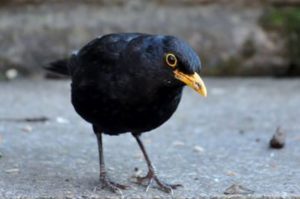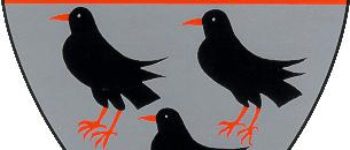1867: Pheasant, blackbirds, thrushes and starlings
January 7, 2019
By AHNZ

151 years of blackbirds and thrushes in Cantab!
10 January, 1867: The Canterbury Acclimatisation Society released imported pheasant, blackbirds, thrushes and starlings, according to DISCO. All of these birds are alive and well in Canterbury today. It was also around this time that the Society introduced the Australian magpie.
Disastrous impact on native flora and fauna?
I’m not so sure. But part of the colonisation process is turning a hostile environment into a safe and productive one. Not just bringing in familiar birds from ‘home’ for emotional and attachment needs either, it was practical.
 The Society believed that prior to the introduction of these birds there were slugs and caterpillars all over everything. They said sea birds would swarm into the hinterland then be seen flying out again with bellies full of bugs and grubs of the plains.
The Society believed that prior to the introduction of these birds there were slugs and caterpillars all over everything. They said sea birds would swarm into the hinterland then be seen flying out again with bellies full of bugs and grubs of the plains.
It’s hard to get an agricultural colony bopping along if slugs eat all your produce!
Well, if that’s true then we are better off with these old bird buddies from ‘home’. It’s hard to get an agricultural colony bopping along if slugs eat all your produce! The Canterbury Settlers needed to be able to grow crops and be self reliant, they wanted to be exporting goods not having to import food and animal feed. For Canterbury to be established, to survive, to thrive, is the priority over and above the displaced Aotearoa ‘dodo’ bugs and birds (whatever these were.)
In its native state our Canterbury country was full of swamps which must have been full of rot and maggots and bugs and flies and grubs constantly generated.
 30 October, 1865, has evidence of what the Society was to achieve in little over a year by introducing these birds. I suppose you could also say it’s evidence of establishing an alibi for what they were about to do too. As for my judgement, I’m quite willing to side with ‘Tasmanian’ in that account. In its native state our Canterbury country was full of swamps which must have been full of rot and maggots and bugs and flies and grubs constantly generated. How bad was it? Perhaps we should have these birds on the Canterbury coat of arms alongside the sheep and the plough? Old Canterbury, in England, does.*
30 October, 1865, has evidence of what the Society was to achieve in little over a year by introducing these birds. I suppose you could also say it’s evidence of establishing an alibi for what they were about to do too. As for my judgement, I’m quite willing to side with ‘Tasmanian’ in that account. In its native state our Canterbury country was full of swamps which must have been full of rot and maggots and bugs and flies and grubs constantly generated. How bad was it? Perhaps we should have these birds on the Canterbury coat of arms alongside the sheep and the plough? Old Canterbury, in England, does.*
—
* Theirs is a bird we didn’t bring in, the chough
Ref. Tasmanian, The Press
Image ref. Canterbury Coat of Arms; heraldry-wiki.com
Image ref. Slug; Science Focus
Image ref. Blackbird; Melbourne Music Boutique; DISCO
 Like Comment Share
Like Comment Share





